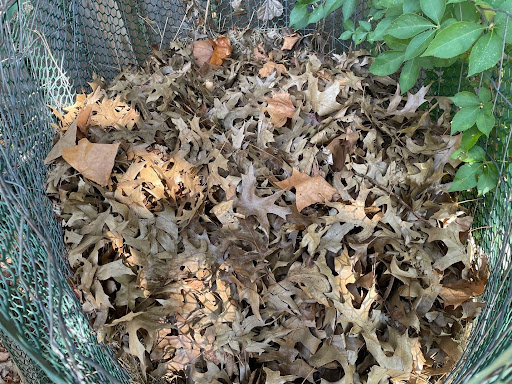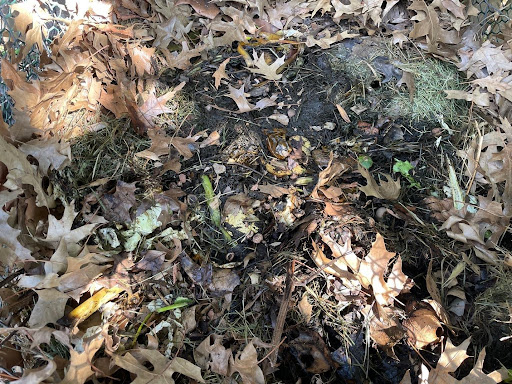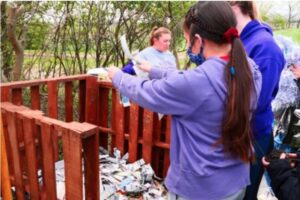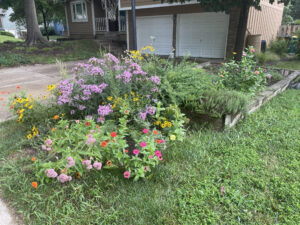Start here if you’ve never composted before!
Nature decomposes everything that was once alive, so all we need to do is copy nature, right? Well — sort of. True “composting” doesn’t happen in nature. But knowing the biology of decomposition will give you the knowledge you need to compost anywhere with any (or no) equipment.
The key to composting is to create what we like to call a bacterial storm! A raging ferment of bacteria that will rapidly decompose — eat and transform — our ingredients. (It’s not as scary as it sounds.)

Here are the conditions that must be present for composting to occur:
Moisture
The first key ingredient for composting is moisture. But not liquid water; we want the core of our compost pile to be damp. Because our main workers are bacteria who breathe through their membranes (their skin), we want the humidity to be at least 50% for them to thrive. Think of a damp sponge with one last drop of water left to wring out.
Materials
Our next goal is to provide the right diet for our bacterial workers. Just like us, they need carbohydrates and proteins to eat. These can be found in materials like leaves and food scraps. There are thousands of composting “recipes” that can work, but they will always have carbohydrates and proteins mixed together.
Volume
The third key ingredient for successful compost is mass or volume. We want to build an elephant and not a mouse. Unless we have enough volume, the compost pile will not retain enough moisture or heat inside. The recommendation for a backyard pile is typically three feet wide, high, and deep. That’s the volume that’s big enough to maintain the humidity and retain the heat.
Time
The fourth ingredient is time. Bacteria can only work so fast. Some expensive industrial composting systems can produce compost-like brown material in only three weeks, but then it still needs to be left to cure into fully decomposed material. If you’ve seen ads for a Lomi or a Mill, the countertop food dryers that work overnight, rest assured that these are not actually composting machines and the product they produce will rot and stink the minute they get wet! Compost that is finished properly has only a light, earthy smell.

Turning
The last key ingredient in your compost pile is turning. If your compost pile is outside and you have a warm, moist core working away, you’ll have a dry, cool outer layer around it that insulates and helps hold the moisture in. But you do want to mix the pile to let the undigested food on the outside go inside to be composted.
Rot ‘n’ Roll!
Once these conditions are present, a pile will start to heat up and rapidly decompose. You will have created a “sweet spot” where this process takes off!


